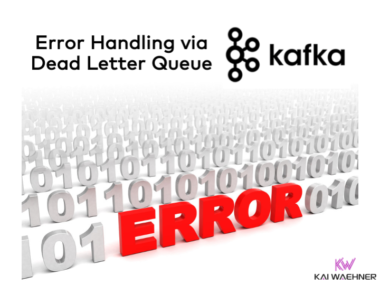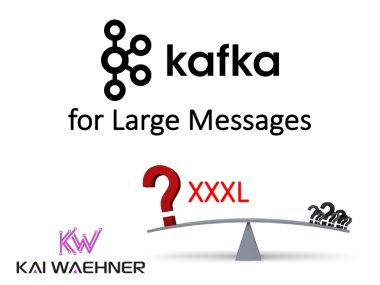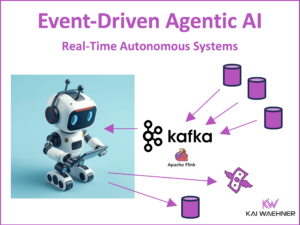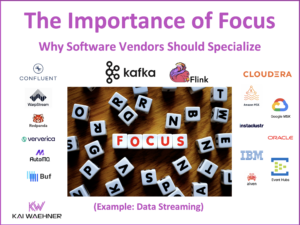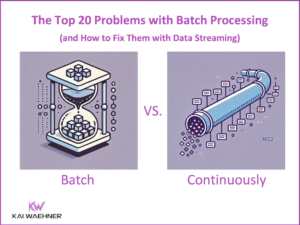Loyalty and rewards platforms are crucial for customer retention and revenue growth for many enterprises across industries. Apache Kafka provides context-specific real-time data and consistency across all applications and databases for a modern and flexible enterprise architecture. This blog post looks at case studies from Albertsons (retail), Globe Telecom (telco), Virgin Australia (aviation), Disney+ Hotstar (sports and gaming), and Porsche (automotive) to explain the value of data streaming for improving the customer loyalty.
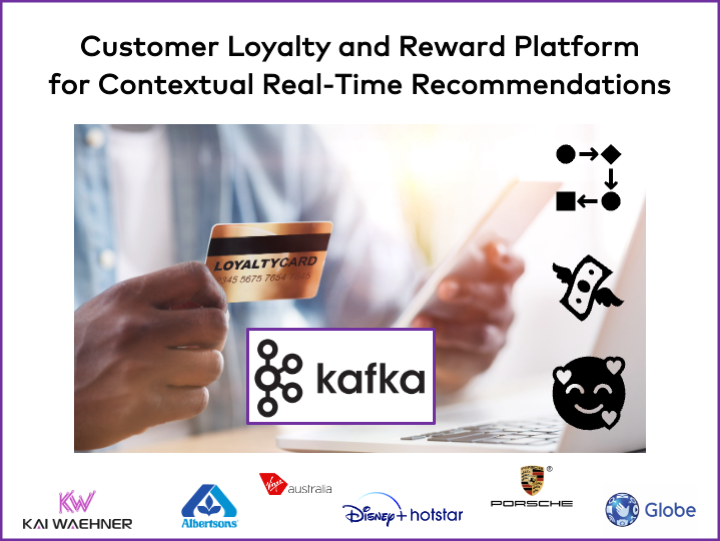
What is a Loyalty Platform?
Data Streaming with Apache Kafka for the Next-Generation Loyalty Platform
Apache Kafka is a distributed data streaming platform for building real-time data pipelines and streaming applications.
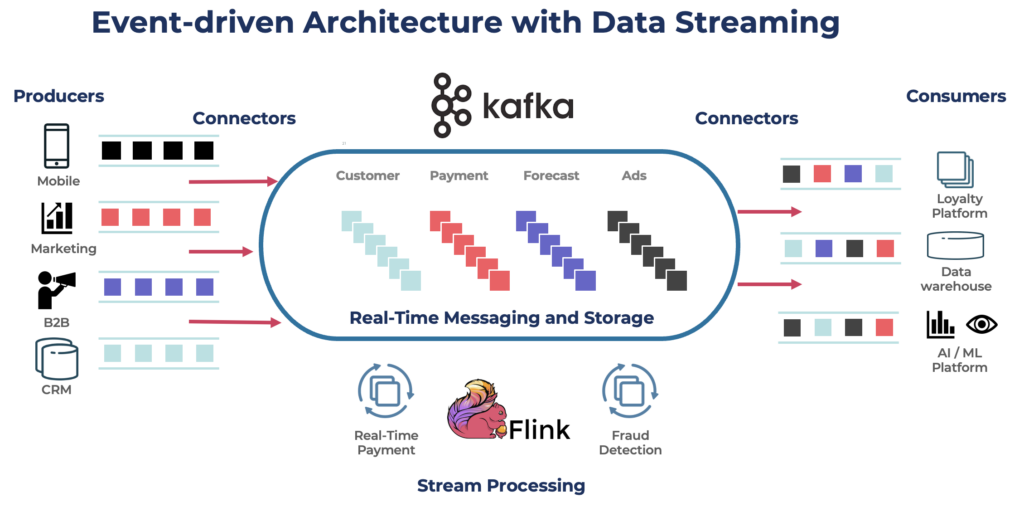
While it may not be the alone technology for building a loyalty platform, there are several reasons companies incorporate Apache Kafka into the enterprise architecture of a loyalty platform:
- Real-Time Data Processing: Apache Kafka excels at handling real-time data streams. In a loyalty platform, real-time processing is crucial for activities such as updating customer points, sending instant notifications, and providing timely rewards.
- Message Durability: Kafka persists messages on disk, ensuring durability even in the event of a system failure. This feature is important for loyalty platforms, as it helps prevent data loss and ensures the data consistency and integrity of customer transaction records across real-time and non-real-time applications.
- Scalability: Loyalty platforms can experience varying levels of user engagement and data volume. Apache Kafka scales horizontally, allowing the platform to handle increased loads by adding more Kafka brokers to the cluster. This scalability is valuable for accommodating growth in the number of users and transactions.
- Data Integration: Loyalty platforms often need to integrate with various data sources and systems, such as customer databases, e-commerce platforms, and CRM systems. Kafka’s ability to act as a data integration hub facilitates the seamless flow of data between different components of the loyalty platform and external systems.
- Fault Tolerance and Reliability: Apache Kafka provides fault tolerance by replicating data across multiple brokers in a cluster. This ensures that, even if a broker fails, data is not lost, contributing to the reliability of the loyalty platform.
- Event-Driven Architecture: Loyalty platforms can benefit from an event-driven architecture, where events trigger actions and updates across the system. Kafka’s publish-subscribe model enables a decoupled, event-driven approach, making it easier to introduce new features or integrations without tightly coupling components.
- Event Sourcing: Apache Kafka supports the event sourcing pattern, which is relevant for loyalty platforms where events like customer transactions, point accruals, and redemptions need to be captured and stored as a sequence of immutable events. This can simplify data modeling and auditing. Tiered Storage for Kafka makes replayability even easier, more scalable, and cost-efficient – with no another data lake.
- Analytics and Monitoring: Kafka provides tools for real-time analytics and monitoring, which can be valuable for gaining insights into user behavior, loyalty program effectiveness, and system performance. Integrating Kafka with other analytics platforms allows for a comprehensive view of the loyalty platform’s operations.
Use Cases for a Kafka-powered Loyalty Platform
While specific implementations may vary, here are some examples of how Apache Kafka can be used in loyalty platforms:
- Real-Time Points Accumulation: Kafka can process and handle real-time events related to customer transactions. As users make purchases or engage with the loyalty platform, these events can be captured in Kafka topics. The platform can then process these events in real-time with stream processing using Kafka Streams or Apache Flink to update customer points balances and trigger relevant notifications.
- Event-Driven Rewards and Offers: Kafka’s publish-subscribe model allows for an event-driven approach to managing rewards and offers. When a customer becomes eligible for a reward or offer, the loyalty platform can publish an event to the appropriate Kafka topic. Subscribers, such as notification services or backend processors, can then react to these events in real-time, ensuring timely communication and fulfillment of rewards via push notifications to a mobile app or location-based service.
- Cross-Channel Integration: Loyalty platforms often operate across multiple channels, including online stores, mobile apps, and physical stores. Kafka can facilitate the integration of these channels by serving as a central hub for loyalty-related events. For example, customer interactions in different channels can generate events in Kafka, allowing the loyalty platform to maintain a consistent view of customer activity across all touchpoints – no matter if the interface is real-time, batch, or an API.
- Customer Engagement Tracking: Kafka can capture and process events related to customer engagement. Events such as logins, clicks, or interactions with loyalty program features can be streamed to Kafka topics. This data can then be used for real-time analytics, allowing the platform to understand customer behavior and adjust loyalty strategies accordingly.
- Fault-Tolerant Transaction Processing: Loyalty platforms deal with critical customer transactions, including point redemptions and reward fulfillment. Kafka’s fault-tolerant architecture and Transaction API ensures these transactions are reliably processed even in the face of hardware failures or other issues. This helps maintain the integrity of customer balances and transaction history.
- Scalable Data Processing: As the user base and transaction volume of a loyalty platform grows, Kafka’s scalability becomes crucial. Loyalty platforms can leverage Kafka to scale horizontally, distributing the processing load across multiple Kafka brokers to accommodate increased data throughput.
- Audit Trail and Compliance: Kafka’s log-based architecture makes it well-suited for maintaining an audit trail of loyalty-related events. This is valuable for compliance purposes, ensuring that all customer interactions and transactions are recorded in a secure and tamper-evident manner. Replayability of historical data in guaranteed order is a common Kafka sweet spot.
- Integration with External Systems: Loyalty platforms often need to integrate with external systems, such as payment gateways, CRM systems, or analytics platforms. Kafka can act as a central integration point, enabling seamless communication between the loyalty platform and these external systems. Kafka’s data integration capabilities have significant benefits compared to ETL, ESB and iPaaS tools.
These examples highlight how Apache Kafka plays a pivotal role in building a robust and scalable architecture for loyalty platforms, providing the infrastructure for real-time processing, fault tolerance, and integration with various components.
Example: Real-Time Rewards Platform for Video Streaming built with Apache Kafka
While Apache Kafka offers these advantages, it’s important to note that building a loyalty and reward platform involves various technologies and platforms. Kafka is a scalable real-time data fabric for the architecture of a loyalty platform and complementary to other open-source, commercial or SaaS transactional and analytics applications.
Here is an example of a loyalty and rewards platform built around video streaming platforms like Twitch. Kafka connects to different APIs and interfaces, correlates the information, and ingested the data into downstream applications:
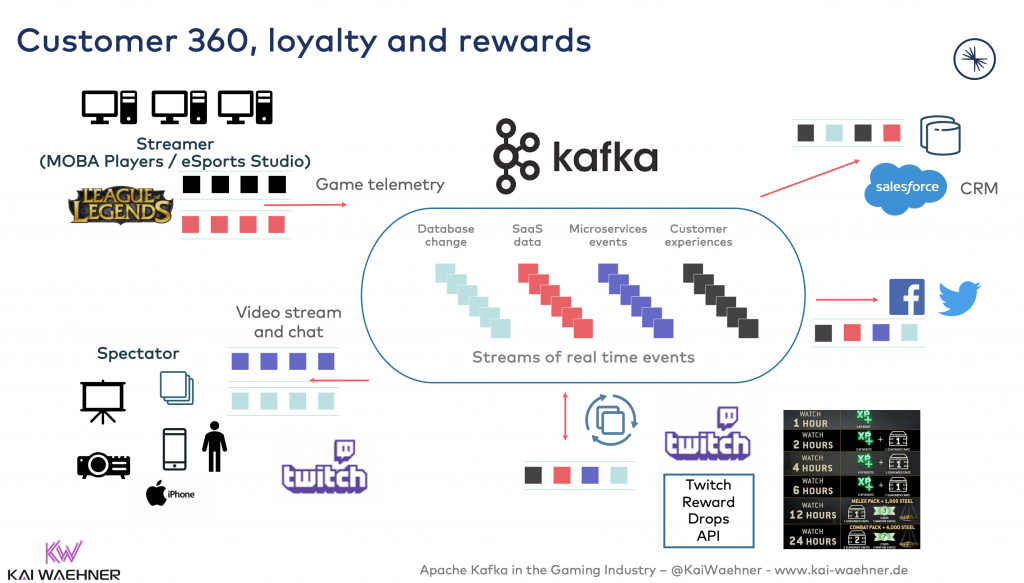
Many of these interfaces provide bi-directional communication. For instance, the Salesforce CRM is updated with new information from an influencer, i.e., video streamer. On the other side, the Twitch subscribers receive notifications like drops or rewards based on information consumed from Salesforce CRM.
Real World Case Studies Across Industries for Kafka-based Loyalty and Rewards Platforms
Plenty of success stories exist for customer loyalty and reward systems built around Apache Kafka as data fabric and integration hub. Let’s explore some case studies across industries around the world:
- Retail: Albertsons (United States)
- Airlines: Virgin Australia
- Telco: Globe Telecom (Asia)
- Automotive / Manufacturing: Porsche (Germany)
- Sports and Gaming: Disney+ Hotstar (Asia)
- Public Sector: Service NSW (Australia)
Retail: Albertsons – Revamped Loyalty Platform to Retain Customers for Life
Albertsons is the second largest American grocery company with 2200+ stores and 290,000+ employees. “Customers for Life” is the primary goal of its CEO: “We want our customers to interact with us daily […] doubling down on our omnichannel engagement with customers beyond just transactions.”
For this reason, Albertsons choose Apache Kafka as the strategic data integration platform. The cloud-native architecture handles extreme retail scenarios like Christmas or Black Friday:
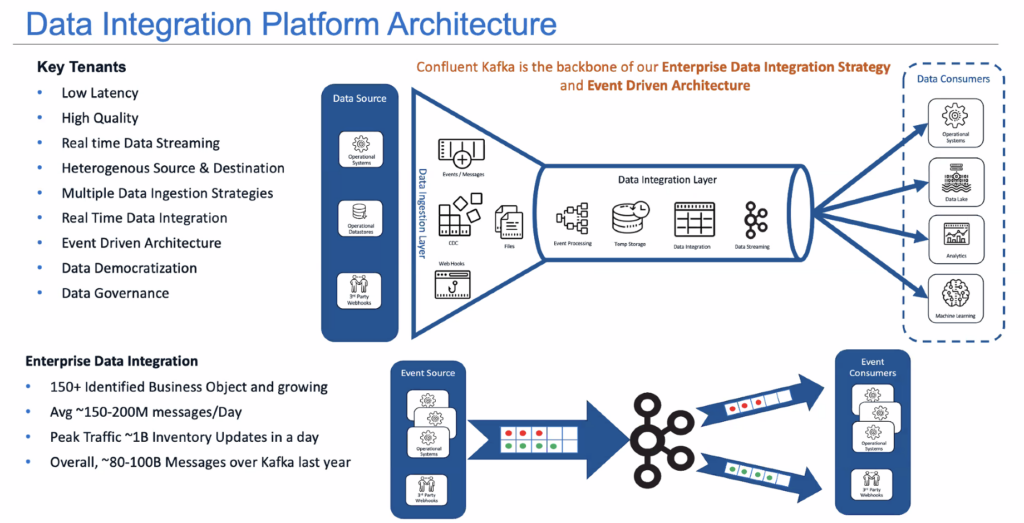
Albertsons use cases include:
- Scalable workforce management and supply chain modernization
- Inventory updates from 2200 stores to the cloud services in near real time
- Distributing offers and customer clips to each store in near real time
- Feed the data in real time to forecast engines for supply chain order forecast, demand planning, and other tasks
- Ingesting transactions in near real time to data lake for reporting and analytics
- New retail media network
Here is an example business process of Albertsons revamped loyalty platform. The data streaming platform connects to various applications and databases, then processes and shares the events:
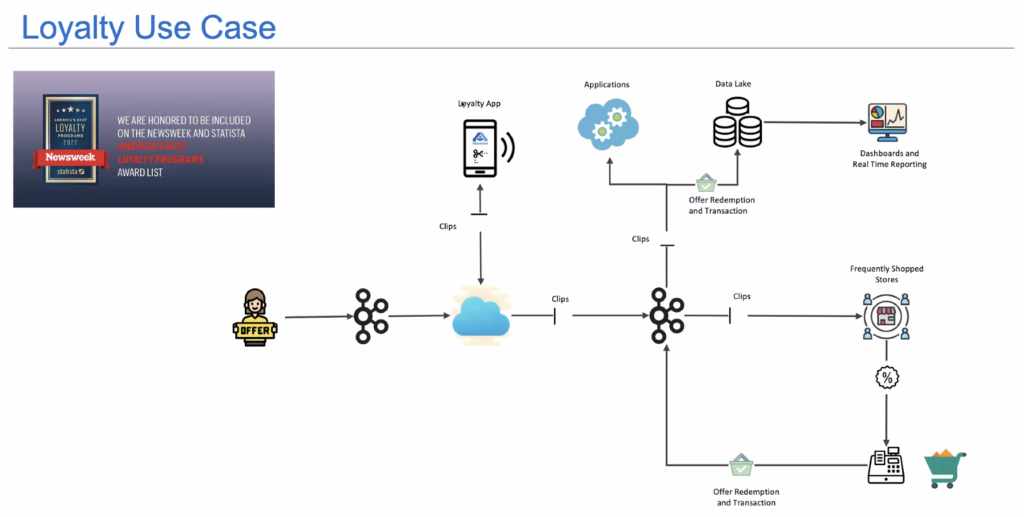
Plenty of other success stories for loyalty platforms build with Kafka exist in the retail world. For instance:
- Kmart (Australia): The Loyalty platform “OnePass” provides customers a more seamless shopping experience, better customer personalization, and offers. The instant customer feedback improves the retention rate. Turning paper receipts into valuable digital data with streaming also saves millions of dollars. For instance, better analytics forecasts enable accurate product and ranging options and better stock and inventory planning.
- Intersport (Austria): The central nervous system for real-time data is powered by Confluent Cloud. Its loyalty platform offers a real-time bonus point system. The data hub shares personalized marketing and omnichannel customer experience across online and stores. Data integration ensures data consistency across the ERP, financial accounting (SAP FI) and 3rd Party B2B, 100s of Point-of-Sale (POS), legacy batch FTP applications.
Aviation: Virgin Australia – Workflow Orchestration between Airline, GDS, CRM and Travel Booking

Telco: Globe Telecom – Personalized Rewards Points
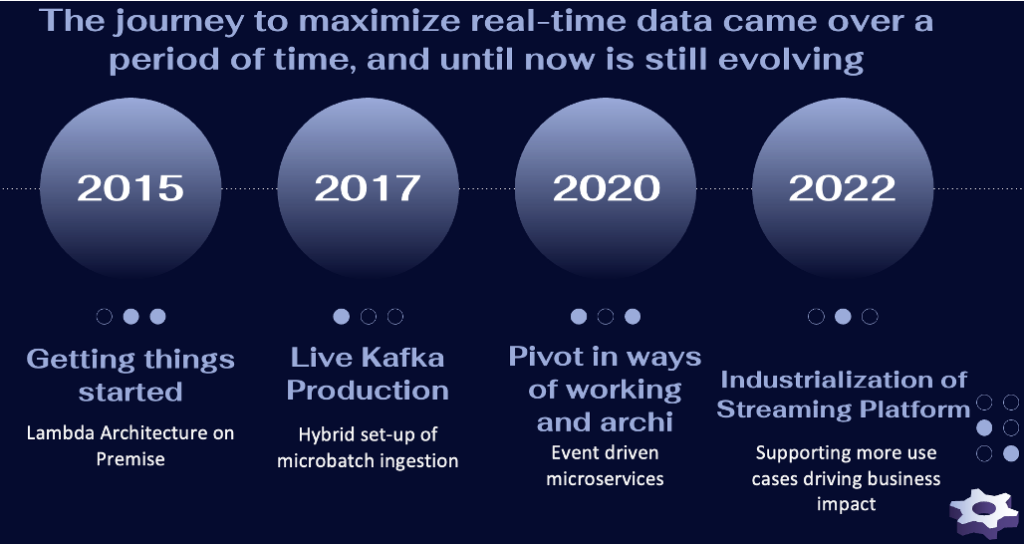
Manufacturing / Automotive: Porsche – Digital Service Platform for Customers, Fans, and Enthusiasts
Porsche is a German automotive manufacturer (one of Volkswagen’s subsidiaries) specializing in high-performance sports cars, SUVs, and sedans, known for its iconic designs and a strong emphasis on driving dynamics and engineering excellence.
Providing points or rewards for buying cars is a difficult strategic for car makers. Most people buy or lease a car every few years. Hence, car makers often focus on providing a great customer experience during the buying process. ‘My Porsche’ is Porsche’s digital service platform for customers, fans, and enthusiasts across multiple channels like website, mobile app, and the dealership on site:
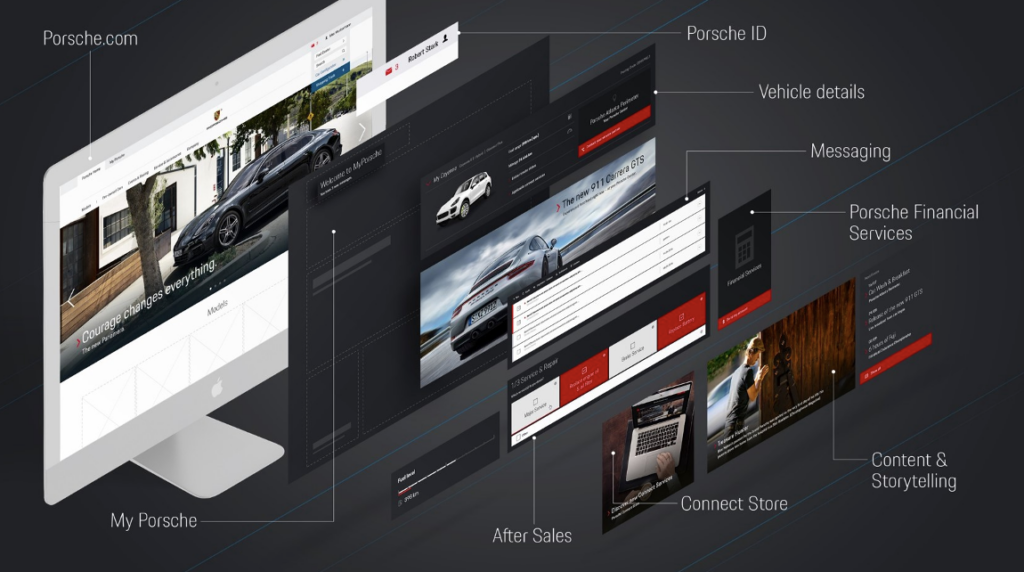
A customer 360 view across multiple channels is difficult to implement. Porsche has a central data stream strategy across data centers, clouds, and regions to ensure data consistency across real-time, batch, and request response APIs. Porsche’s Streamzilla is the automakers’s one-stop-shop for all data streaming needs powered by Apache Kafka.
Streamzilla enables the data-driven company. It is one central platform, providing a unifying data architecture for setting clean standards and enabling cross-boundary data usage with a single source of truth.
Streamzilla is simplified by design: A single source of truth. The pipeline provides transparency about the cluster state, while increasing productivity and enhancing fault-tolerance & repeatability through automated execution.
Check out Porsche’s Kafka Summit talk or more details about omnichannel customer 360 architectures leveraging Apache Kafka to learn more.
Sports and Gaming: Disney+ Hotstar – Gamification of Live TV Events and Integration of Affiliates
Hotstar (acquired by Disney) is a popular Indian over-the-top (OTT) streaming service that offered a wide range of content, including movies, TV shows, sports, and original programming. “Hotstar Watch N Play” combines gamification and loyalty, which creates a win-win-win for Hotstar, users and affiliates. The feature was introduced to engage users further during live sports events.
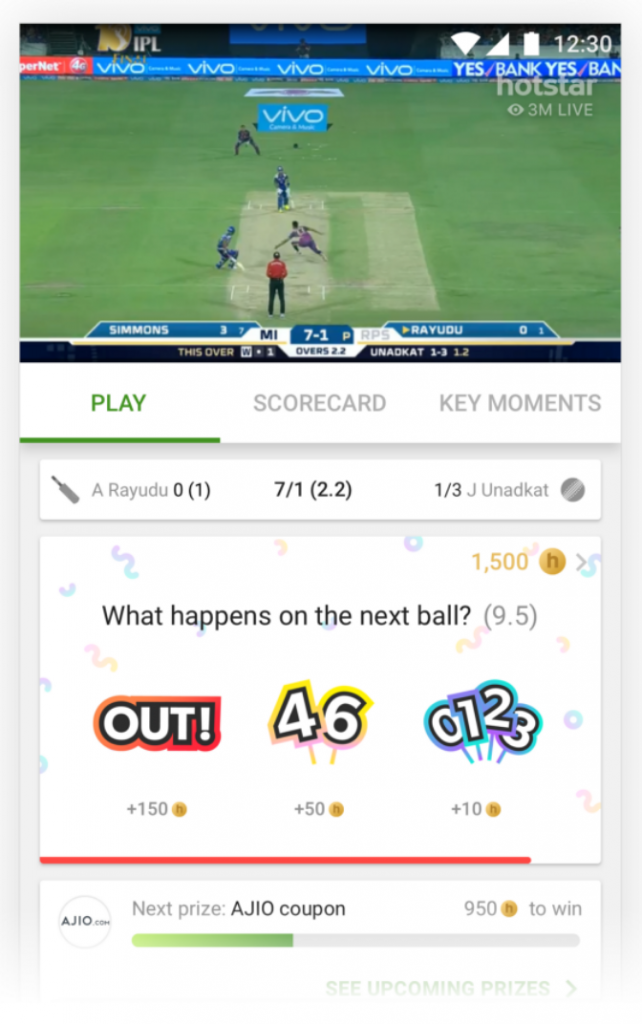
Here’s a general overview of how gamification of a live sports event works with “Hotstar Watch N Play”:
- Live Streaming of Sports: Hotstar provides live streaming of various sports events, focusing particularly on cricket matches, which are immensely popular in India.
- Interactive Experience: The “Watch N Play” feature makes the viewing experience more interactive. Users could predict outcomes, answer trivia questions, and take part in polls related to the live sports event they were watching.
- Points and Rewards: Users earn points based on the accuracy of their predictions and their participation in the interactive elements. These points can redeem rewards or showcased on leaderboards.
- Leaderboards and Social Interaction: Hotstar often incorporates leaderboards to highlight top scorers among users. This adds a competitive element to the experience, encouraging users to compete with friends and other viewers. Users can also share their achievements on social media.
- Engagement and Gamification: “Watch N Play” enhances user engagement by adding a gamified layer to the streaming experience. By blending entertainment with interactivity, Hotstar keeps viewers actively involved during live events.
This infrastructure has to run at extreme scale. Millions of actions have to be processed each second. No surprise that Disney+ Hotstar chose Kafka as the heart of this infrastructure. Kafka Connect integrates with various data sources and sinks.
IoT Integration is often also part of such a customer 360 implementation. Use cases include:
- Live e-sports events, TV, video streaming and news stations
- Fan engagement
- Audience communication
- Entertaining features for Alexa, Google Home or sports-specific hardware
Public Sector: NSW Australia – Single View of the Citizen and Partner Onboarding
The public sector includes various government organizations, agencies, and institutions at the national, regional, and local levels that provide public goods and services to the citizens
Obviously, a loyalty and rewards platform for the public sector must look differently (and has another name). The enterprise architecture is similar to all the private sector examples I covered above, though the goals and benefits are different.
Service New South Wales (NSW) is an Australian NSW government agency that delivers the best possible customer experience for people who want to apply for a bushfire support grant, get an energy rebate, manage their driver license, or access any of the many other government services and transactions available within the state of New South Wales.
The agency is part of the NSW government’s greater push to become “the world’s most customer-centric government by 2030.”
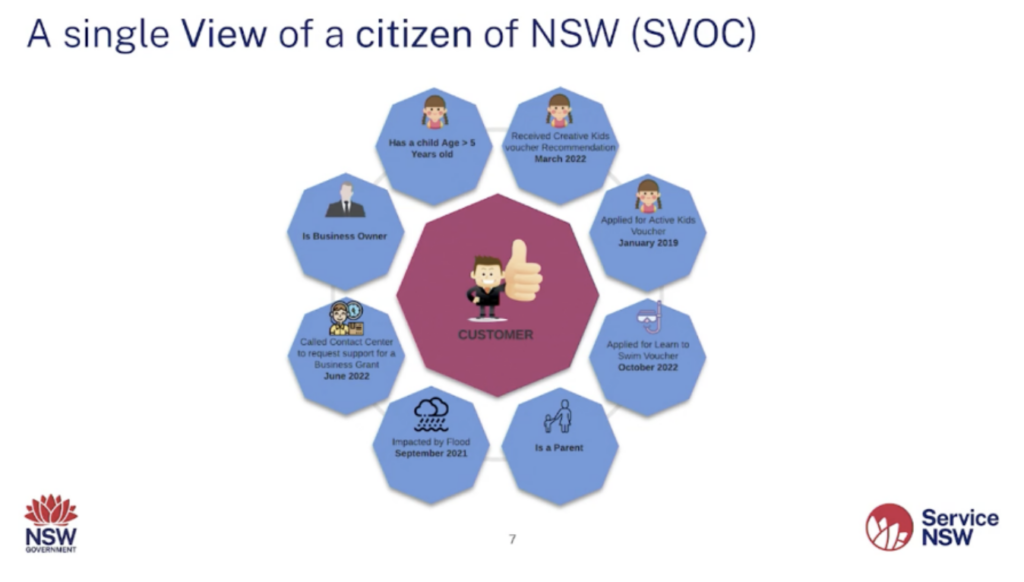
Service NSW partners with 70-plus teams and /agencies and offers 200 products, delivering about 1,300 different services and transactions. It’s an enormous effort and creates a complex integration problem from a technology point of view.
There are three components to the Apache Kafka data streaming architecture that make the single view of a citizen possible. The first is the onboarding of partners. In order to build that single view of the customer, Service NSW has to first collect information from 70+ product teams. These include all kinds of data sources, some with public networks, some with private.
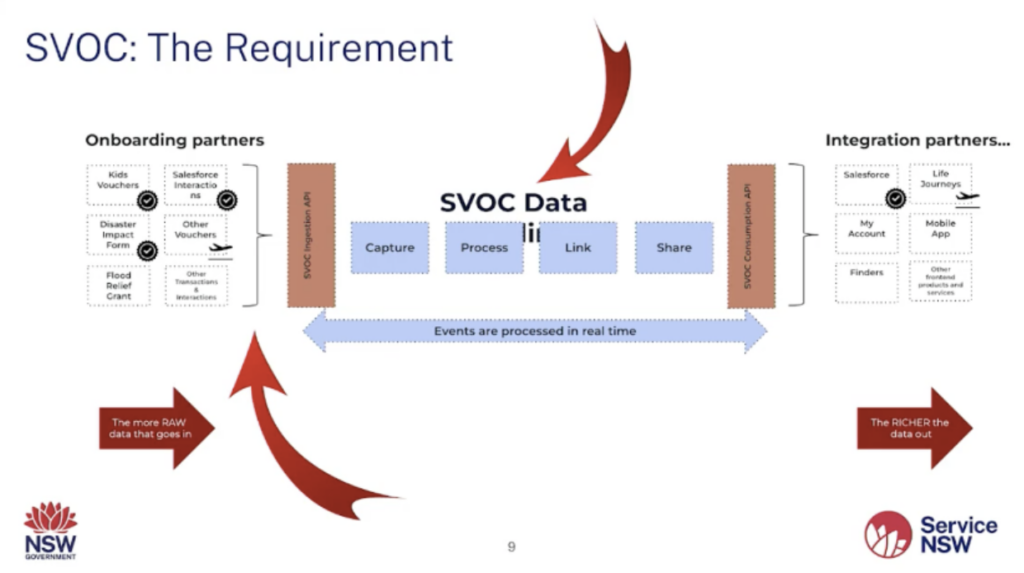
Those integration partners include end-user-facing platforms like Salesforce and the interfaces of the apps customers see, such as the Service NSW Mobile App or MyServiceNSW web app.
Apache Kafka = Data Hub for Customer Loyalty
Loyalty points systems and customer rewards are crucial across most industries for long-term customer retention, increased revenue and visibility of a brand. Contextual information at the right time and data consistency across different applications require a reliable and scalable data hub.
Apache Kafka is the de facto standard for data streaming. Modern enterprise architectures leverage Kafka and its ecosystem to provide a better customer experience with accurate and innovative loyalty services.
How does your loyalty platform and rewards system look like? Do you already leverage data streaming in the enterprise architecture? Or even build context-specific recommendations with stream processing technologies like Kafka Streams or Apache Flink? Let’s connect on LinkedIn and discuss it! Stay informed about new blog posts by subscribing to my newsletter.

